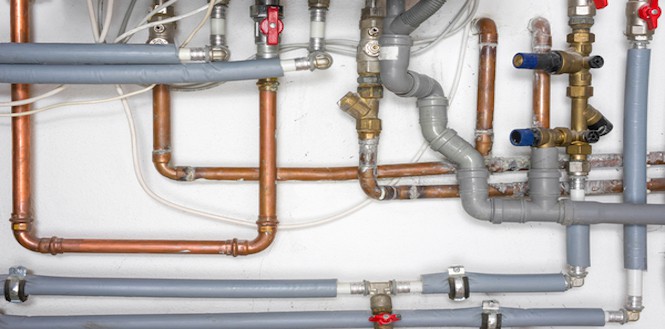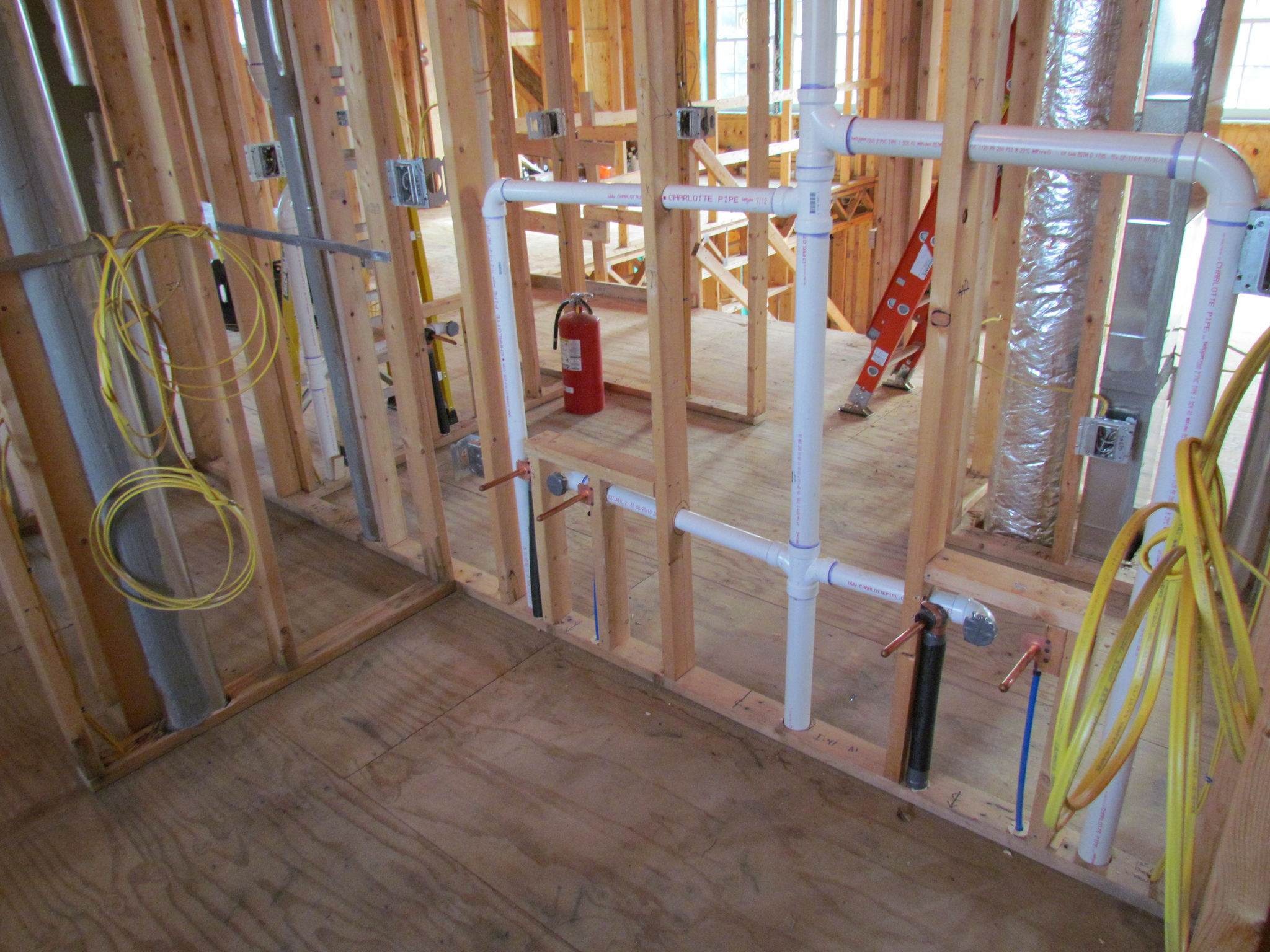In this article on the next paragraphs you can locate a good deal of sensible points pertaining to Understanding Your Home's Plumbing Anatomy.

Recognizing just how your home's pipes system works is vital for every single home owner. From delivering clean water for drinking, food preparation, and showering to securely getting rid of wastewater, a well-maintained pipes system is crucial for your family members's health and wellness and convenience. In this detailed guide, we'll check out the complex network that composes your home's pipes and deal pointers on upkeep, upgrades, and handling usual concerns.
Intro
Your home's pipes system is greater than simply a network of pipelines; it's a complicated system that ensures you have accessibility to tidy water and reliable wastewater elimination. Recognizing its parts and just how they interact can aid you protect against pricey fixings and make certain whatever runs efficiently.
Fundamental Parts of a Pipes System
Pipelines and Tubing
At the heart of your pipes system are the pipelines and tubes that lug water throughout your home. These can be made from different materials such as copper, PVC, or PEX, each with its advantages in terms of resilience and cost-effectiveness.
Fixtures: Sinks, Toilets, Showers, etc.
Components like sinks, commodes, showers, and tubs are where water is used in your house. Recognizing exactly how these components attach to the pipes system assists in identifying troubles and intending upgrades.
Shutoffs and Shut-off Points
Valves regulate the circulation of water in your plumbing system. Shut-off valves are crucial throughout emergency situations or when you need to make repairs, allowing you to isolate parts of the system without disrupting water circulation to the whole home.
Supply Of Water System
Key Water Line
The major water line links your home to the municipal water system or a personal well. It's where water enters your home and is distributed to numerous components.
Water Meter and Pressure Regulatory Authority
The water meter measures your water use, while a stress regulator ensures that water moves at a risk-free pressure throughout your home's pipes system, preventing damages to pipes and fixtures.
Cold Water vs. Warm water Lines
Understanding the difference in between cold water lines, which supply water straight from the main, and hot water lines, which carry warmed water from the water heater, helps in fixing and preparing for upgrades.
Drainage System
Drain Pipes Water Lines and Traps
Drain pipes bring wastewater away from sinks, showers, and commodes to the sewer or septic system. Traps protect against sewage system gases from entering your home and also trap particles that might create obstructions.
Ventilation Pipelines
Ventilation pipelines allow air right into the water drainage system, protecting against suction that might reduce drain and create traps to vacant. Proper air flow is essential for preserving the honesty of your plumbing system.
Significance of Correct Drainage
Making certain proper drain prevents backups and water damage. Consistently cleaning drains pipes and maintaining traps can protect against costly repairs and prolong the life of your pipes system.
Water Heating System
Types of Water Heaters
Hot water heater can be tankless or traditional tank-style. Tankless heating units warmth water on demand, while tanks keep warmed water for immediate use.
Updating Your Pipes System
Reasons for Upgrading
Updating to water-efficient fixtures or changing old pipelines can improve water top quality, reduce water expenses, and boost the worth of your home.
Modern Plumbing Technologies and Their Benefits
Check out modern technologies like smart leak detectors, water-saving bathrooms, and energy-efficient hot water heater that can conserve money and minimize ecological impact.
Cost Considerations and ROI
Determine the in advance expenses versus lasting financial savings when considering plumbing upgrades. Numerous upgrades pay for themselves with lowered energy costs and fewer repairs.
Exactly How Water Heaters Attach to the Pipes System
Recognizing just how water heaters connect to both the cold water supply and warm water circulation lines aids in diagnosing issues like insufficient hot water or leaks.
Maintenance Tips for Water Heaters
Routinely flushing your water heater to eliminate sediment, examining the temperature level settings, and inspecting for leakages can expand its life expectancy and enhance energy effectiveness.
Typical Plumbing Issues
Leaks and Their Causes
Leaks can occur due to aging pipelines, loose fittings, or high water pressure. Dealing with leaks promptly prevents water damages and mold development.
Obstructions and Clogs
Blockages in drains pipes and bathrooms are typically triggered by flushing non-flushable items or an accumulation of oil and hair. Making use of drainpipe screens and being mindful of what goes down your drains pipes can avoid clogs.
Signs of Pipes Troubles to Look For
Low water pressure, slow-moving drains pipes, foul odors, or uncommonly high water bills are signs of possible plumbing troubles that must be attended to quickly.
Pipes Upkeep Tips
Normal Assessments and Checks
Arrange annual pipes assessments to catch concerns early. Try to find indications of leaks, deterioration, or mineral accumulation in faucets and showerheads.
DIY Upkeep Tasks
Basic tasks like cleansing tap aerators, checking for bathroom leaks making use of dye tablets, or shielding subjected pipelines in chilly climates can protect against significant plumbing concerns.
When to Call a Specialist Plumbing Technician
Know when a pipes problem requires specialist competence. Trying complex fixings without appropriate expertise can cause more damages and higher repair service costs.
Tips for Minimizing Water Usage
Straightforward practices like repairing leakages quickly, taking much shorter showers, and running full lots of laundry and recipes can save water and reduced your utility costs.
Eco-Friendly Plumbing Options
Take into consideration sustainable pipes products like bamboo for flooring, which is durable and green, or recycled glass for countertops.
Emergency situation Preparedness
Actions to Take During a Plumbing Emergency situation
Know where your shut-off valves lie and how to shut off the water supply in case of a burst pipeline or major leak.
Value of Having Emergency Situation Contacts Helpful
Maintain contact info for regional plumbing professionals or emergency solutions conveniently available for quick response throughout a pipes crisis.
Environmental Effect and Preservation
Water-Saving Fixtures and Home Appliances
Setting up low-flow taps, showerheads, and toilets can dramatically reduce water usage without giving up efficiency.
DIY Emergency Fixes (When Suitable).
Short-lived repairs like utilizing air duct tape to spot a dripping pipeline or placing a container under a leaking tap can reduce damages until an expert plumbing shows up.
Verdict.
Recognizing the anatomy of your home's plumbing system empowers you to preserve it effectively, conserving money and time on repairs. By following regular maintenance routines and staying notified regarding modern plumbing technologies, you can ensure your plumbing system operates successfully for several years to come.
HOW YOUR PLUMBING SYSTEM WORKS
Which Pipes Do What?
Blue lines = fresh water supply entering the building Red lines = hot water supply entering the building Grey lines = pipes carrying waste away from the building and venting pipes carrying gases away from the building (through the roof) YOUR MAIN PLUMBING SYSTEMS
There are two main plumbing systems that support your home s basic plumbing needs one that brings clean water into your home, and one that sends dirty water away from your home. Connected to the toilet, bath, shower, and other faucets in your home, these two systems keep your water flowing in the right directions.
ACCESSING FRESH WATER
Fresh and clean water is brought into your home through the main water supply line . Filtered through one pipe, this water is pressured to flow into the various fixtures in your home at any given time.
This water can be sourced from a well located on your property, a pond or river (mostly cottages), or, as in most cases, from the city s municipal water treatment centre. However, it is important to note that water that is untreated, such as the water siphoned from ponds or rivers, may not be safe to drink. Personal water supplies always need to be treated for hardness and contaminants before consumed.
MUNICIPAL WATER SUPPLIES
Improve taste and odour Remove sediment Eliminate hardness Reduce chlorine COLD WATER SUPPLY VS. HOT WATER SUPPLY
Cold water flows into your home or building through the service line, which then distributes hot or cold water to your fixtures. This line is most commonly run through a central column that runs floor to floor. Hot water runs in short and straight pipes as the longer the pipeline, the more heat that will be lost in the transfer. Having shorter pipes also allows residents to access hot water more quickly.
WASTE WATER SYSTEM
Your wastewater system is divided into two parts pipes that send wastewater away from your home and venting pipes that send sewer gas away from your home. Sewage water travels through pipes that flush the water and waste towards local sewers that are operated and managed by your city or town. Most sewer systems rely on gravity to move the wastewater to where it needs to go.
The further away from your toilet or sink, the larger wastewater pipes become. This allows for waste to be disposed of from various parts of your home or business at once without pipe blockages. The angle and flow of these pipes are also essential for keeping your waste pipes clear of build up.
https://harrisplumbing.ca/how-your-home-plumbing-system-works/

We are very inquisitive about Anatomy of a House: Understanding the Components and I really hope you enjoyed the new blog posting. If you enjoyed our blog posting plz don't forget to share it. I praise you for your time. Revisit us soon.
Get Started